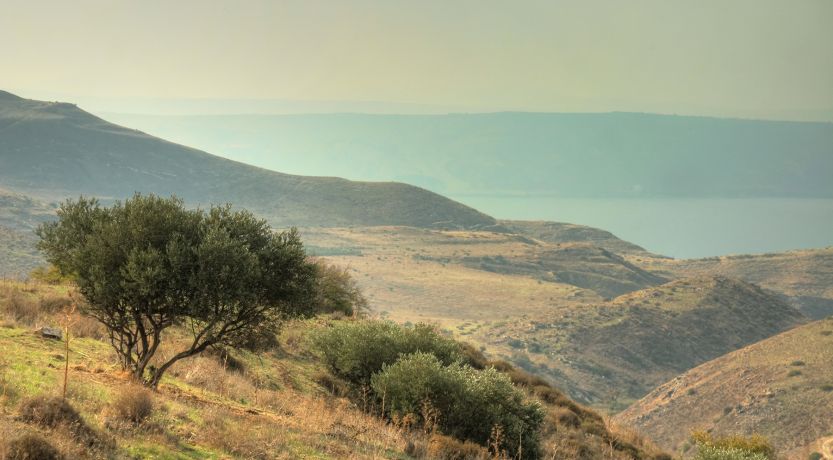Three chapters in Matthew, often called the Sermon on the Mount, have exerted an extraordinary influence on Western civilization. Are they important to you?

“We have too many men of science; too few men of God. We have grasped the mystery of the atom and rejected the sermon on the Mount.” These are the words of American Gen. Omar N. Bradley, spoken three years after the end of World War II during a Memorial Day celebration.
The Sermon on the Mount and Western culture
Gen. Bradley, who by the end of the war commanded 43 divisions composed of 1.3 million men, was not alone. And the Allies were not the only ones to grasp the value of the Sermon on the Mount. So did some Germans.
The Cost of Discipleship, by Dietrich Bonhoeffer, was written for religious Germans living under the Nazi regime and drew heavily from the Sermon on the Mount. In fact, a third of the book is based on this sermon.
Even Mahatma Gandhi, the Hindu statesman who led the campaign for India’s independence from Britain, recognized the significance of this important part of the Bible. “If I had to face only the Sermon on the Mount and my own interpretation of it,” he said, “I should not hesitate to say, ‘O yes, I am a Christian.’”
Of course, it is Western civilization that has been most affected. Many of our common idioms come from the Sermon on the Mount. Even English speakers who do not recognize the source of these sayings or consider themselves Christians use them. Here are a few:
- Turn the other cheek.
- Salt of the earth.
- Go the extra mile.
- Wolves in sheep’s clothing.
Even before the United States became a nation, American leaders drew on this part of Scripture to inspire and motivate their followers.
In a sermon he delivered in 1630, John Winthrop, the governor of the Massachusetts Bay Colony, declared that the fledgling colony would “be as a city upon a hill.” In quoting from the Sermon on the Mount, he was referring to the fact that the whole world would be paying attention to their experiment in self-governance.
More recently, President Ronald Reagan called America a “shining city on a hill” in numerous speeches. Amazingly, the U.S. Congressional Record includes hundreds of references to the Sermon on the Mount in recent decades.
What does this passage mean for us?
Before we can reflect on the relevance and value of these three chapters in Matthew’s Gospel account, we need to consider exactly what this material is.
What is the Sermon on the Mount?
Augustine, who lived in the fourth and fifth centuries, coined the term Sermon on the Mount in his Latin commentary on the book of Matthew. It became a common designation in English Bibles as the result of the Coverdale Bible, published in 1535 (Zondervan Pictorial Encyclopedia of the Bible, Vol. 5, p. 350).
But what is the Sermon on the Mount?
We can choose, as so many do today, to ignore Jesus’ teachings, taking the easy path in life and thus building on the wrong foundation. Or we can choose to heed Jesus’ words, following a challenging path and building our lives on the Word of God.
The short answer is that chapters 5 through 7 in the Gospel of Matthew constitute the Sermon on the Mount. There is a parallel account in Luke, which is sometimes called the “Sermon on the Plain” because Luke identifies the location of the discourse he recorded as “a level place” (Luke 6:17). Matthew, on the other hand, wrote of a “mountain” (Matthew 5:1).
Luke and Matthew are likely referring to two characteristics of the same location.
The Greek word translated “mountain” may mean “‘the mountain region’ or ‘the hill country,’” and the “level place” in Luke can describe “a relatively flat place in rough, rocky, or hilly terrain” (The Expositor’s Bible Commentary, Vol. 8, p. 129).
Thomas and Gundry’s A Harmony of the Gospels include this note on the nuance between Luke and Matthew’s description of the location: “Similarities between the two are too numerous to allow for two different sermons. Jesus delivered this sermon from a level place on the side of a mountain.”
If you travel to the Sea of Galilee today, you’ll see it is surrounded by many gradually sloping hills that can easily accommodate groups of people.
The location description is not the only variance between the two accounts. Luke’s is considerably shorter, filling only part of a single chapter (Luke 6:17-49). Since Luke’s version is more condensed than Matthew’s, his material is a little different. Each of the authors targeted different readers, so they emphasized different aspects of Jesus’ message. Matthew addressed Jews familiar with Jewish culture, whereas Luke primarily addressed gentiles.
Regardless of minor variances in the two versions, what really matters is the substance and lessons contained in the Sermon on the Mount.
Why the Sermon on the Mount is important for you
The Sermon on the Mount is the largest single discourse within the Gospels. This discourse is a more practical summary of the essence of what it means to follow Jesus Christ. It is “in effect a challenge to people to live according to the ethics of the kingdom” (Expositor’s Bible Commentary, Vol. 1, p. 534).
Some of the components of the Sermon on the Mount are well known, though some may not realize they are contained within this single message of Jesus. The Beatitudes, for instance, come immediately at the start of Christ’s recorded words. (The term beatitude comes from the Latin word for blessed.)
The Beatitudes are a series of statements about the character traits of people God will bless in this life and in the coming Kingdom of God (Matthew 5:3-12).
Reading through the Beatitudes thoughtfully gives us a means of assessing our own character. We might ask ourselves questions such as, Am I really “poor in spirit” (verse 3), or am I full of myself? Do I truly “hunger and thirst for righteousness” (verse 6), or have I become complacent and lazy in my Christian walk?
At the same time, the Beatitudes are comforting. They are full of promises from God, ranging from His comfort (verse 4) and mercy (verse 7) to our opportunity to be among those who inherit the earth (verse 5) and who will be called sons of God (verse 9)!
The model prayer and other well-known components
Another well-known component of the Sermon on the Mount is what is often called “the Lord’s Prayer” (Matthew 6:9-13; a shorter version appears in Luke 11:2-4). Many have memorized and regularly recite it.
However, reciting any prayer repeatedly turns it into nothing more than a ritual. This wasn’t Jesus’ intent. Prior to providing this model prayer, Jesus expressly taught His followers not to use vain repetitions (Matthew 6:7). The significance of this passage is far greater. It provides Christians an outline of major topics we should be praying about.
This does not mean that every prayer must follow the outline exactly. Rather, it gives us a tool for self-evaluation. Just as the Beatitudes give us the means by which we can reflect on our Christian walk, the model prayer gives us the means to evaluate our prayer life. We can ask ourselves, are we regularly praying about the general topics Jesus gave in the model prayer?
What else is in the Sermon on the Mount?
Other well-known passages include Christ’s admonitions for His followers to love their enemies (5:44) and to refrain from judging others (7:1). It also includes Christ’s appeal to His disciples to ask God for what they need and to seek Him (7:7-8).
One final element of the Sermon on the Mount that is too important—and too well known—not to mention, is what is often called the Golden Rule (7:12). This maxim calls on us to treat other people the way we want to be treated. It is a simple principle that, if put into practice, could change a society for the better in every way.
The choice before you
Jesus ended His Sermon on the Mount with some sobering words, including two illustrations that highlight the choice before all of us. The first one (7:13-14) contrasts a wide gate with a narrow gate. It is a caution not to choose the easy path, which leads to destruction.
The second (7:24-27) describes two men building homes for themselves. One built on sand, and the other built on rock. The foundation each chose made all the difference. The house built on sand collapsed, whereas the house built on rock survived. This points to Jesus Christ as the true Rock we must build our lives on (1 Corinthians 10:4).
We have the same choices before us today. We can choose, as so many do today, to ignore Jesus’ teachings, taking the easy path in life and thus building on the wrong foundation. Or we can choose to heed Jesus’ words, following a challenging path and building our lives on the Word of God.
For those people just beginning to study the Bible, the Sermon on the Mount is a good place to start. For longtime students of the Bible, the Sermon on the Mount is like a familiar friend, reminding us of what is really important in life.
If you would like to study this important passage in greater detail, read our booklet The Sermon on the Mount.





